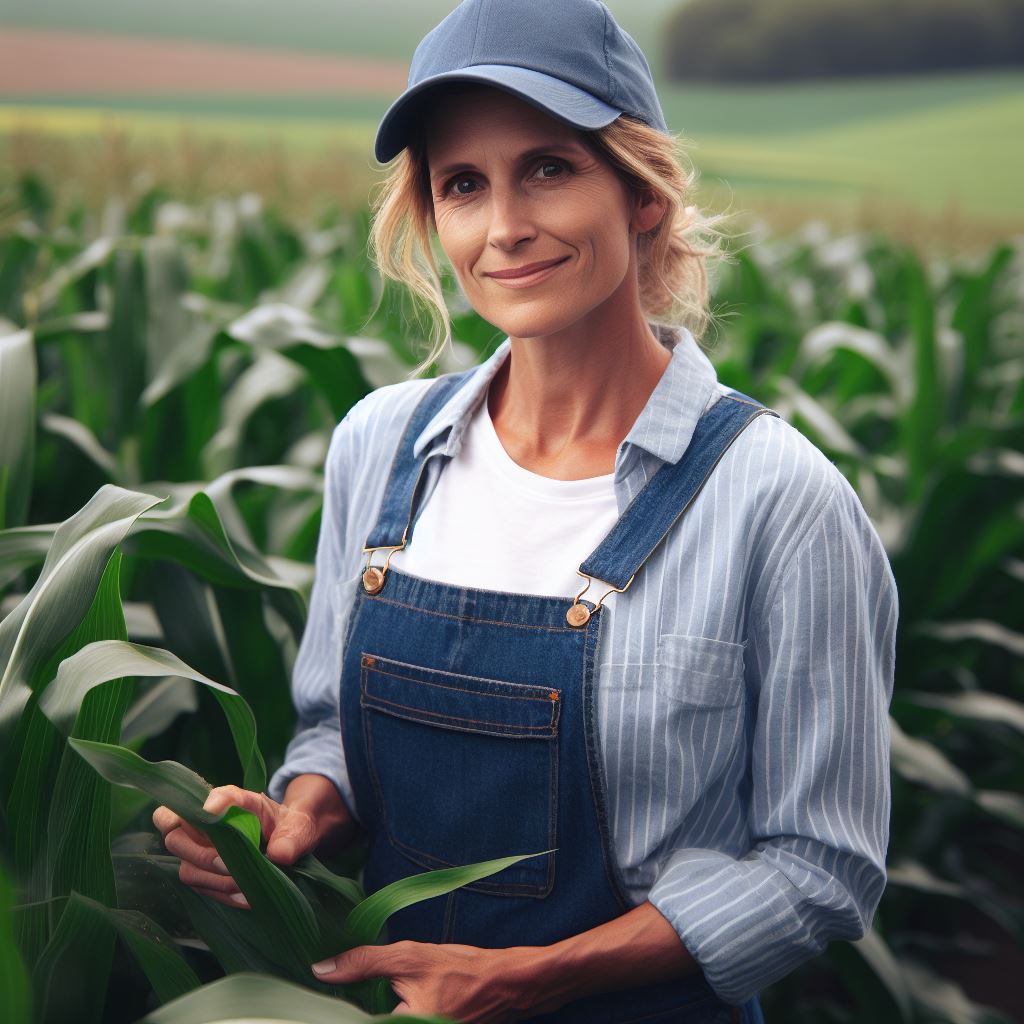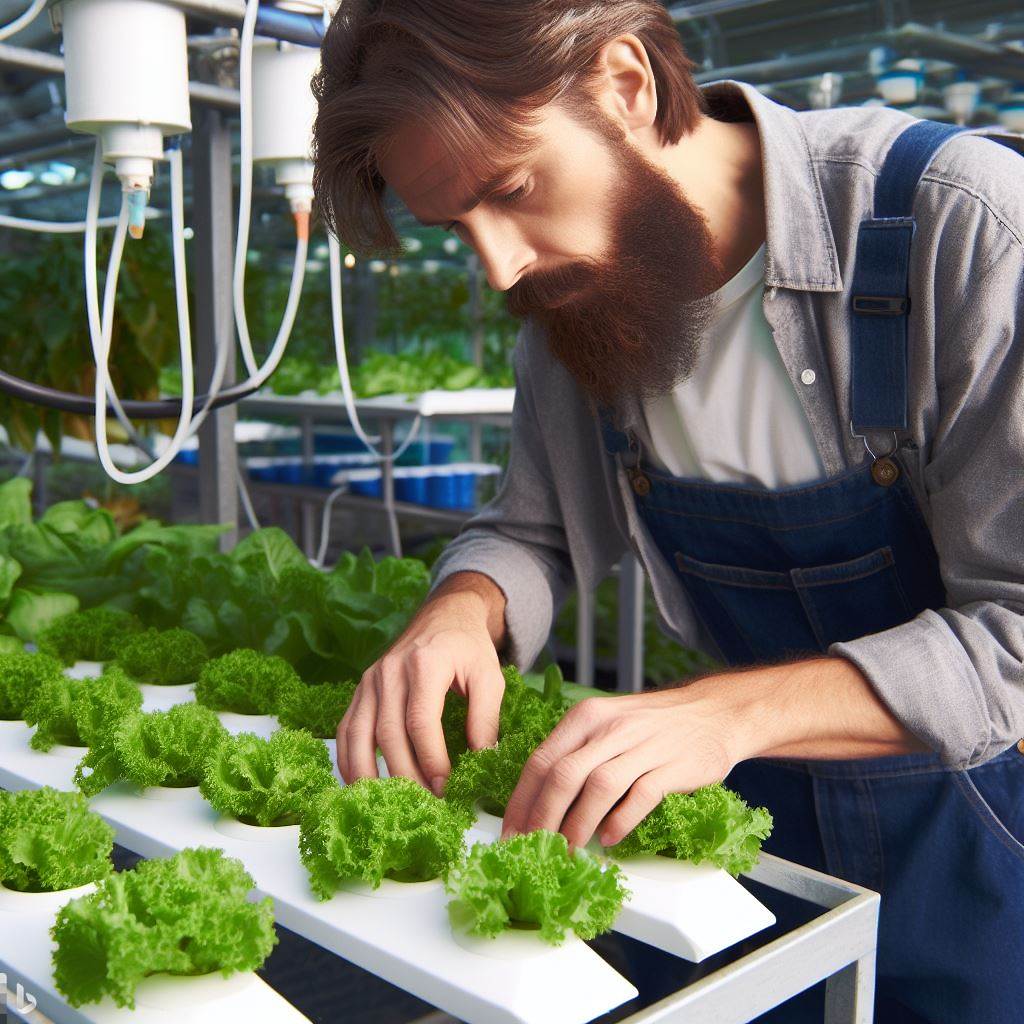Introduction
Background information on US farm subsidies
US farm subsidies have been a crucial part of American agriculture for decades.
They were originally implemented during the Great Depression to support struggling farmers and ensure food security for the nation.
Over time, the subsidies have evolved and become a significant aspect of the agricultural industry.
Purpose of the blog post
This blog post aims to shed light on the impact and controversies surrounding US farm subsidies.
By exploring both the positive and negative consequences of these financial aids, we can gain a comprehensive understanding of their role in the agricultural sector.
On one hand, farm subsidies have proven beneficial for many farmers. They provide a safety net during times of low crop prices, crop failures, or other unforeseen circumstances.
Additionally, subsidies encourage agricultural productivity, contributing to a stable food supply and lower prices for consumers.
However, there are also criticisms and controversies associated with US farm subsidies. Some argue that they disproportionately benefit large agricultural corporations, leading to less support for small family farmers. Furthermore, subsidies are seen as distorting free market forces and discouraging innovation in the industry.
In the end, US farm subsidies have a significant impact on both farmers and consumers, but they are not without controversy.
This blog post aims to provide a balanced perspective on the topic, offering insights into the benefits and challenges associated with these subsidies.
By doing so, readers can form a more informed opinion about this important aspect of American agriculture.
Overview of US Farm Subsidies
Farm subsidies have long been a contentious topic in the United States. Proponents argue that they are essential for maintaining a robust agricultural sector and ensuring food security.
On the other hand, critics contend that subsidies disproportionately benefit large agribusinesses, distort market competition, and have negative environmental impacts.
Definition and types of farm subsidies
- Farm subsidies refer to financial payments or other types of support given to agricultural producers.
- There are two main types: direct payments and price support programs.
- Direct payments provide farmers with a fixed amount of money based on historical production.
- Price support programs aim to stabilize the prices of agricultural commodities through government intervention.
Understanding the definition and types of farm subsidies is crucial to grasp their implications fully.
Direct payments, which form the core of subsidies, provide financial assistance to farmers based on historical production. This helps stabilize their income and incentivizes long-term planning.
Price support programs, another type of subsidy, intervene in the market to stabilize the prices of agricultural commodities.
By implementing price floors or purchasing excess supply, the government seeks to protect farmers from price fluctuations and ensure a steady income stream.
Reasons for implementing farm subsidies in the US
There are several reasons why farm subsidies have been implemented in the US over the years.
Ensuring food security is a primary objective, as subsidies encourage domestic production and reduce dependence on imports.
By supporting farmers financially, these programs aim to guarantee a stable food supply for the nation.
- To ensure food security by supporting domestic production and reducing reliance on imports.
- To stabilize farm incomes and protect farmers from market volatility and unpredictable weather conditions.
- To maintain rural communities and preserve the agricultural sector’s economic contribution.
- To incentivize agricultural innovation, research, and development for sustainable farming practices.
Furthermore, farm subsidies help mitigate the risks associated with agriculture. Farmers face uncertainties due to weather conditions, market fluctuations, and production risks.
Subsidies provide a safety net, minimizing income variations and shielding farmers from financial hardships.
The agricultural sector is also crucial for the vitality of rural communities. Farm subsidies help sustain these communities by supporting agricultural livelihoods and preserving local economies.
Without subsidies, many small towns and rural areas could experience a decline in population and economic activity.
Moreover, farm subsidies can incentivize farmers to adopt sustainable practices and invest in agricultural research and development.
By providing financial support, the government encourages innovation, environmental stewardship, and the adoption of new technologies that promote efficient resource use.
Key stakeholders involved in farm subsidy programs
- The federal government plays a crucial role in formulating, implementing, and funding farm subsidy programs.
- Agricultural producers, including large-scale and small-scale farmers, are directly affected by these subsidies.
- Rural communities heavily rely on farm subsidies to sustain their economies and maintain population levels.
- Consumers have a stake in farm subsidies as they influence food prices and availability.
- Environmental organizations advocate for sustainable farming practices and may be involved in shaping subsidy policies.
- Other stakeholders include agricultural associations, trade organizations, and international trading partners.
Various stakeholders are involved in the formulation and implementation of farm subsidy programs.
The federal government plays a central role by designing policies, allocating funds, and overseeing program implementation.
Agricultural producers, both large and small, are directly impacted by these subsidies as they influence farm income and overall profitability.
Rural communities heavily rely on farm subsidies as they affect the economic health and sustainability of local businesses and infrastructure.
Consumers, too, have a stake in farm subsidies, as they influence the availability and affordability of food products in the market.
Environmental organizations and other advocacy groups also play a role, advocating for sustainable farming practices and influencing subsidy policies.
Furthermore, agricultural associations, trade organizations, and international trading partners contribute to the dialogue on farm subsidies due to concerns regarding market distortions and fair global trade.
In closing, farm subsidies have a multifaceted impact and are subject to much debate and controversy.
Understanding the various types of subsidies, the reasons behind their implementation, and the key stakeholders involved is essential to formulating informed opinions and fostering productive discussions around this topic.
Impact of US Farm Subsidies
Farm subsidies in the United States have had both positive and negative impacts on the agricultural sector.
On one hand, they have contributed to increased agricultural productivity.
With financial support from subsidies, farmers have been able to invest in modern farming techniques, advanced equipment, and research and development.
This has resulted in improved productivity and higher crop yields, meeting the growing demand for food.
Transform Your Career Today
Unlock a personalized career strategy that drives real results. Get tailored advice and a roadmap designed just for you.
Start NowPositive impacts
- Increased agricultural productivity: Farm subsidies have enabled farmers to invest in new technologies, equipment, and research, leading to improved productivity and higher crop yields.
- Stabilized food prices: Subsidies help keep food prices stable by providing financial support to farmers during times of low production or fluctuating market conditions.
- Preservation of family farms:By providing financial assistance, subsidies have helped family-owned farms stay in business, preventing the consolidation of agricultural land by large corporations.
Another positive impact of farm subsidies is the stabilization of food prices.
By providing financial aid to farmers during periods of low production or market unpredictability, subsidies ensure a consistent food supply.
This helps prevent price fluctuations and ensures food remains affordable and accessible to consumers.
Furthermore, farm subsidies have played a role in the preservation of family farms.
By offering financial assistance, subsidies enable small, family-owned farms to continue operating.
This helps maintain the diversity of agricultural producers and prevents the concentration of farmland in the hands of large corporations. Family farms often contribute to local economies and maintain rural communities.
On the other hand, there are negative impacts associated with US farm subsidies. One major concern is the distortion of market competition.
Subsidized farmers have a competitive advantage over unsubsidized farmers, as they receive financial support from the government.
This creates an unequal playing field, making it challenging for non-subsidized farmers to compete effectively. It can also lead to market consolidation, with larger subsidized farms dominating the industry.
Negative impacts
- Distorted market competition: Farm subsidies can create an uneven playing field by giving an advantage to subsidized farmers, making it difficult for unsubsidized farmers to compete.
- Environmental consequences: The overproduction encouraged by subsidies can lead to environmental issues such as soil erosion, water pollution, and biodiversity loss.
- Disadvantages for small-scale and minority farmers:Subsidies primarily benefit large-scale industrial farms, making it harder for small-scale and minority farmers to access financial assistance and compete in the market.
Another negative consequence is the environmental impact of subsidies. The incentive to maximize production encouraged by subsidies can result in overproduction, leading to environmental degradation.
This includes issues such as soil erosion, water pollution from excessive use of fertilizers and pesticides, and loss of biodiversity.
These environmental consequences can have long-term effects on ecosystems and sustainability.
Additionally, small-scale and minority farmers often face disadvantages regarding farm subsidies.
The majority of financial support goes to large-scale industrial farms, making it difficult for small-scale and minority farmers to access the same level of assistance.
This further exacerbates existing socioeconomic disparities within the agricultural sector.
Furthermore, US farm subsidies have had mixed impacts on the agricultural sector.
While they have contributed to increased productivity, stabilized food prices, and supported family farms, they have also led to distorted market competition, environmental consequences, and disadvantages for small-scale and minority farmers.
Addressing these negative impacts is vital for achieving a more sustainable and equitable agricultural system.
Read: Economic Impacts of Farming on the US Economy
Controversies Surrounding US Farm Subsidies
Disparity in subsidy distributions
The allocation of subsidies in the US agricultural sector has raised concerns due to the noticeable disparities between different groups of farmers.
- Large-scale agribusinesses often receive a significant portion of subsidies, exacerbating income inequality.
- Small and medium-sized farms, which are essential for local economies, often receive a disproportionately smaller share of subsidies.
Influence of corporate agriculture
The dominance of corporate agriculture in the US has prompted critics to question the influence it wields regarding farm subsidies.
- Big agricultural corporations tend to have more political influence, making it easier for them to secure larger subsidies.
- Critics argue that this further consolidates power in the hands of a few major players, stifling competition and innovation.
Trade implications and international controversies
The US farm subsidies have global implications and frequently generate controversies on the international stage.
- Other countries argue that US subsidies distort global agricultural markets, giving American farmers an unfair advantage.
- This has led to trade disputes, as countries impose tariffs or file complaints with the World Trade Organization (WTO).
- Critics contend that these controversies undermine international cooperation and hamper efforts to achieve fair and open trade in agriculture.
Calls for reform and reduction of subsidies
Amidst the controversies, there have been growing calls for reform and reduction of US farm subsidies.
- Critics argue that subsidies should be redirected towards sustainable agriculture practices, environmental conservation, and rural development initiatives.
- Some propose a cap on subsidy payments to ensure a more equitable distribution among farmers.
- The need for transparency and accountability in subsidy programs is also highlighted to address concerns over favoritism and misuse of public funds.
Generally, US farm subsidies are not without their share of controversies.
The disparity in distribution, influence of corporate agriculture, trade implications, and calls for reform have sparked debates and criticisms.
It is crucial for policymakers to address these issues to ensure a fair and sustainable agricultural system that benefits all farmers and promotes global cooperation in the field of agriculture.
Read: Importance of Crop Rotation and Soil Health in the US

Uncover the Details: Forestry Technology: Tools Every Modern Forester Uses
Arguments for and against US Farm Subsidies
US Farm Subsidies have been a subject of intense debate, with both proponents and critics presenting compelling arguments.
This section explores the arguments for and against these subsidies to provide a comprehensive understanding of the issue.
Proponents’ viewpoints
Ensuring food security
One of the key arguments in favor of US farm subsidies is that they play a crucial role in ensuring food security.
By providing financial support to farmers, the subsidies help stabilize agricultural production and ensure a consistent supply of food for the population.
In times of crisis or natural disasters, these subsidies can be a lifeline, ensuring that people have access to essential food items.
Supporting rural economies
Farm subsidies serve as an important means of supporting rural economies. Agriculture is a significant industry in many rural areas, and farm subsidies provide vital income stability to farmers.
This financial support helps them invest in modern technology and equipment, enhancing productivity and enabling rural communities to thrive.
Without these subsidies, many farmers would struggle to stay afloat, leading to economic decline in rural regions.
Protecting national interest
Proponents argue that farm subsidies are essential for protecting national interest. By maintaining domestic agricultural production, the subsidies reduce the country’s dependence on imported food items.
This not only enhances national security but also provides a sense of self-sufficiency.
Moreover, subsidies can act as a buffer during times of geopolitical tensions or trade disruptions, ensuring a stable food supply even amidst uncertainties.
Critics’ viewpoints
In essence, the arguments for and against US farm subsidies present a complex and multifaceted issue.
Proponents emphasize the importance of food security, supporting rural economies, and protecting national interests.
On the other hand, critics draw attention to market distortion, environmental concerns, and trade impacts.
Understanding these arguments is crucial in formulating effective policies that balance the needs of farmers, consumers, and the environment, ensuring a sustainable and equitable agricultural sector.
Market distortion and inefficiency
One of the primary concerns raised by critics is that farm subsidies can distort market dynamics and hinder efficiency.
By artificially inflating prices, subsidies can discourage competition and prevent market forces from functioning optimally.
This can lead to resource misallocation and hinder the growth of innovative and efficient farming practices.
Critics argue that a more market-oriented approach would allow for fairer competition and better resource allocation.
Negative environmental impacts
Critics also highlight the negative environmental consequences associated with some farm subsidies.
Certain agricultural practices encouraged by subsidies, such as excessive use of fertilizers and pesticides, can contribute to soil degradation, water pollution, and biodiversity loss.
These environmentally harmful practices not only degrade natural resources but also pose risks to human health.
Critics argue that farm subsidies should prioritize sustainable farming practices to mitigate these environmental impacts.
Unfair competition and trade issues
Critics contend that US farm subsidies create unfair competition and trade issues globally.
Subsidized agricultural products from the US can flood international markets, causing market imbalances and disadvantaging farmers from other countries.
This can lead to reduced agricultural competitiveness in other nations, exacerbating poverty and dependency on food aid.
Critics argue for the need to level the playing field in global agricultural trade to promote fair competition and global food security.
Read: The Next Generation: Youth and Farming in the USA
Recent Developments and Future Outlook
Recent changes in US farm subsidy programs
- The US government has made significant changes to its farm subsidy programs in recent years.
- One notable change is the shift towards a more income-based approach in determining subsidy eligibility.
- This means that farmers with higher incomes may receive reduced or no subsidies compared to those with lower incomes.
- Additionally, there has been a greater emphasis on environmental conservation in subsidy programs.
- Farmers are now required to implement certain conservation practices to qualify for subsidies.
- These changes aim to promote a more equitable distribution of subsidies and encourage sustainable farming practices.
Potential reforms and policy options
- There are ongoing discussions about further reforming US farm subsidy programs.
- One proposed option is to limit the total amount of subsidies any individual farmer can receive.
- This would prevent large-scale farms from disproportionately benefiting from subsidies.
- Another reform option is to redirect subsidies towards supporting small and medium-sized farms.
- By providing more support to these farms, it could help counter the consolidation trend in the agricultural sector.
- Diversifying the types of crops eligible for subsidies is another reform option under consideration.
- This could encourage farmers to shift towards growing more diverse and nutritious crops instead of focusing solely on commodity crops.
Predictions on the future of US farm subsidies
- The future of US farm subsidies remains uncertain, but there are several predictions.
- Some experts believe that there will be continued pressure to further reform subsidy programs.
- Concerns about equity, environmental sustainability, and the consolidation of agricultural power are expected to drive these changes.
- It is possible that subsidies may become more targeted towards specific objectives, such as addressing climate change or promoting local food systems.
- Increased public awareness and demand for transparency may also influence the future of farm subsidies.
- Consumers are becoming more conscious about where their food comes from and how it is produced.
- This may result in greater scrutiny of subsidy programs and a push for more accountable and efficient use of taxpayer dollars.
Essentially, recent developments in US farm subsidy programs have aimed to make them more equitable and environmentally sustainable.
Ongoing discussions and potential reforms suggest that further changes are likely in the future.
The direction of these changes will depend on various factors, including concerns about equity, sustainability, and public demand for transparency.
It is essential to strike a balance between supporting farmers and ensuring that subsidies contribute to a resilient and diverse agricultural sector.
Read: Trade Wars & Tariffs: Effects on US Farmers and Crops
Conclusion
Key points discussed
Throughout this section, we have explored the impact and controversies surrounding US farm subsidies. We have seen that these subsidies have both positive and negative effects on the agricultural industry.
Firstly, the subsidies provide financial support to farmers, ensuring stability and protecting them against market fluctuations.
They also help to maintain food security and promote domestic production. Additionally, subsidies can incentivize farmers to adopt sustainable farming practices and invest in modern technologies.
However, there are concerns regarding the distribution of subsidies, with larger farms and wealthy landowners receiving the majority of the funds.
This creates an unequal playing field and hinders small and local farmers from thriving.
There are also environmental implications, as subsidies can encourage the overproduction of certain crops, leading to land degradation and water pollution.
Final thoughts on the impact and controversies of US farm subsidies
In summary, US farm subsidies are a complex and contentious issue. While they offer important support to the agricultural sector, they also raise questions about fairness and sustainability.
Efforts should be made to address the disparities in subsidy distribution and promote more sustainable farming practices.
It is crucial to strike a balance between supporting farmers and protecting the environment.
Policymakers need to carefully evaluate the consequences of subsidies and explore alternative approaches that promote equitable and sustainable agriculture.
Ultimately, a comprehensive and transparent approach is necessary to ensure the long-term viability of the agricultural industry in the United States.




